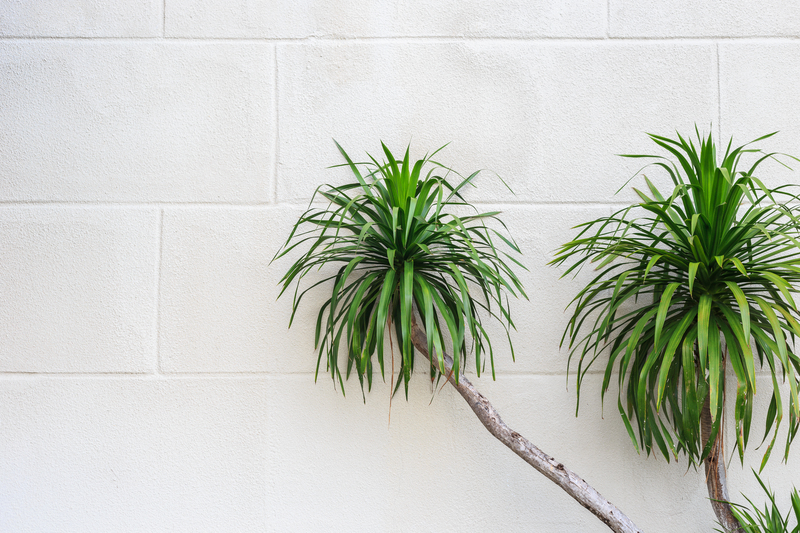Revitalize Your Orchids with Proper Care
Posted on 21/05/2025
Revitalize Your Orchids with Proper Care: The Ultimate Guide
Orchids are among the most captivating and diverse flowering plants in the world, yet many indoor gardeners struggle with keeping them healthy and long-lasting. If your beautiful blooms are fading or your leaves look lackluster, don't lose hope! Learning how to revitalize your orchids with proper care ensures a vibrant display that thrives year-round. Whether you are a beginner or an expert, this comprehensive guide will walk you through all the essential steps to restore your orchids to their prime.
Understanding Orchid Basics
Orchid care begins with understanding your plant's specific needs. With over 25,000 species, orchids vary greatly, but most popular household orchids like Phalaenopsis (moth orchids), Dendrobium, and Cattleya have similar requirements.
- Phalaenopsis: Great for beginners, they have long-lasting blooms and robust nature.
- Dendrobium: Known for their graceful stems and colorful flowers.
- Cattleya: Famous for their fragrant, showy blooms.
_Understanding your orchid variety_ is crucial for tailoring your care routine.
Signs Your Orchid Needs Reviving
Recognizing early warning signs allows you to revitalize your orchid plants before severe damage sets in. Here are common symptoms that your orchid is craving better care:
- Wilted, limp, or wrinkled leaves
- Yellow, brown, or black leaf spots
- Soft or mushy roots
- Poor or no blooms during season
- Leaf drop or bud blast
Don't worry: most orchid problems are reversible with the right approach!
1. Evaluating and Refreshing Your Orchid's Roots
Healthy roots are the secret behind reviving orchids. If your plant's roots are brown, mushy, or have a bad smell, here's what you can do:
- Remove Orchid from Pot: Gently ease the plant out and inspect the root system.
- Trim Damaged Roots: Use sterilized scissors to remove any rotting or dead roots. Leave only firm, white or greenish roots.
- Rinse and Soak: After trimming, rinse with lukewarm water. For severe rot, a brief soak in a fungicide solution can help.
- Repot with Fresh Medium: Use an airy orchid potting mix--never ordinary soil. Bark and sphagnum moss mixes work best.
_A healthy root system is the foundation of vigorous growth--give your plant the best start!_
2. Optimal Watering Habits for Orchids
_Overwatering_ is the most common mistake in orchid care. Orchids prefer drying out slightly between waterings. Here's how to perfect your routine:
- Water once a week in summer, every 10-14 days in winter.
- Ensure water is room temperature--cold water can shock roots.
- Always let excess water drain out of the pot. _Never let roots sit in water!_
- Mist leaves for humidity, not as a substitute for deep watering.
Feel the pot's weight--if it feels light, it's time to water. Consistent watering revives weak orchids and helps prevent fungal diseases.
3. Light Requirements: The Key to Vibrant Blooms
Orchids love bright, indirect sunlight. Too much sun scorches leaves; too little causes weak, spindly growth.
- East or west-facing windowsills are ideal.
- In hot climates, sheer curtains can diffuse harsh light.
- Leaves should be a light olive green. _Dark green means not enough light; yellowing indicates too much._
- Rotate pots regularly to encourage even growth.
Refreshing your orchid's location might be all it needs to start producing those stunning flowers again.
4. Fertilizing for Rejuvenation
To invigorate your orchids, a proper feeding schedule is crucial.
- Use a balanced orchid fertilizer (20-20-20 or 30-10-10).
- Apply at half the recommended strength during active growth periods (spring and summer).
- Fertilize every 2-3 weeks, reducing to monthly in winter.
- Flush with plain water every third feeding to prevent salt buildup.
Feed weak orchids gently--overfertilization can burn delicate roots!
5. Humidity & Air Circulation: The Unsung Heroes
_Orchids naturally thrive in humid environments._ Increasing humidity is a powerful way to vitalize your orchid collection:
- Place a humidity tray (pebbles with water) beneath your pots.
- Use a room humidifier if your home is dry, especially in winter.
- Group orchids together--_they "share" humidity!_
- Ensure gentle air movement with a small fan to prevent fungal issues.
Balancing humidity and airflow will help restore lush foliage and trigger flowering.
6. Repotting to Refresh Orchid Health
Orchids need repotting every 1-2 years, or when their medium breaks down. Repotting is the fastest way to rejuvenate aging plants:
- Refresh potting mix to prevent root suffocation.
- Choose a pot with ample drainage holes.
- _Spring or after blooming is the best time to repot._
- Gently loosen old bark from roots and remove any dead material.
A fresh start encourages new roots and guarantees healthier growth!
7. Managing Orchid Pests & Diseases
Reviving unhealthy orchids sometimes means fighting off pests and diseases. Be on the lookout for:
- Mealybugs and scale: Remove with cotton swabs dipped in isopropyl alcohol.
- Spider mites: Spray with water and increase humidity.
- Root rot and fungal infections: Trim affected areas, repot, and reduce watering.
Healthy, well-maintained orchids are much more resistant to pests and disease.
Special Orchid Rejuvenation Techniques
Sometimes, even with perfect care, orchids need an extra push to regain their glory. Try these advanced orchid revival strategies:
- Water soaking: For severely dehydrated plants, soak roots in water for 10 minutes, then let them dry. Don't do this too often!
- Keiki propagation: If your orchid grows a small plantlet ("keiki"), carefully remove and pot it separately to encourage growth.
- Environmental shock: Slight temperature drops (5?C/9?F) at night during the flowering season can trigger bloom spikes.
- Pruning spent spikes: Cut just above a healthy node on a green stem to encourage fresh flowering.
Common Mistakes to Avoid in Orchid Care
Even experienced orchid growers make mistakes. Avoid these to keep your plants healthy and colorful:
- Don't use standard potting soil--it suffocates roots and traps water.
- Never allow standing water at the base--roots will rot quickly.
- Don't repot during active flowering--wait until blooms drop.
- Avoid direct midday sunlight--leaves can scorch.


Your Orchid Care Checklist for Lasting Success
- Inspect roots and repot regularly for healthy growth.
- Water correctly, allowing the potting mix to dry slightly between waterings.
- Ensure your plant receives bright, indirect sunlight.
- Fertilize with balanced orchid food, at reduced strength.
- Maintain optimal humidity and air circulation.
- Monitor and treat pests or diseases promptly.
Frequently Asked Questions About Orchid Revitalization
-
How do I know if my orchid is dead or can be revived?
Answer: If the roots are mostly white/green and at least some leaves remain, your orchid can usually be revived with proper care. -
Why is my orchid not blooming?
Answer: Insufficient light, lack of fertilizer, or absence of seasonal temperature change are common reasons. Correct these and be patient. -
Is it normal for orchid leaves to turn yellow?
Answer: Lower leaves naturally yellow and drop as new ones grow, but multiple yellow leaves may mean problems with water, light, or nutrition. -
Can I save an overwatered orchid?
Answer: Yes! Remove rotten roots, repot in fresh orchid mix, and cut back watering.
Conclusion: Bring Your Orchids Back to Life
Orchids are truly rewarding once you understand their unique requirements. By following the steps outlined above, you can revitalize your orchid collection and enjoy healthy foliage and amazing blooms season after season. Remember: patience and observation are key. With proper orchid care, your plant will not only recover but thrive for years to come. So, roll up your sleeves, give your orchids the love they deserve, and soon you'll be rewarded with a spectacular floral show in your home!
Ready to breathe new life into your orchids? Start today, and watch as your efforts bring stunning results!

